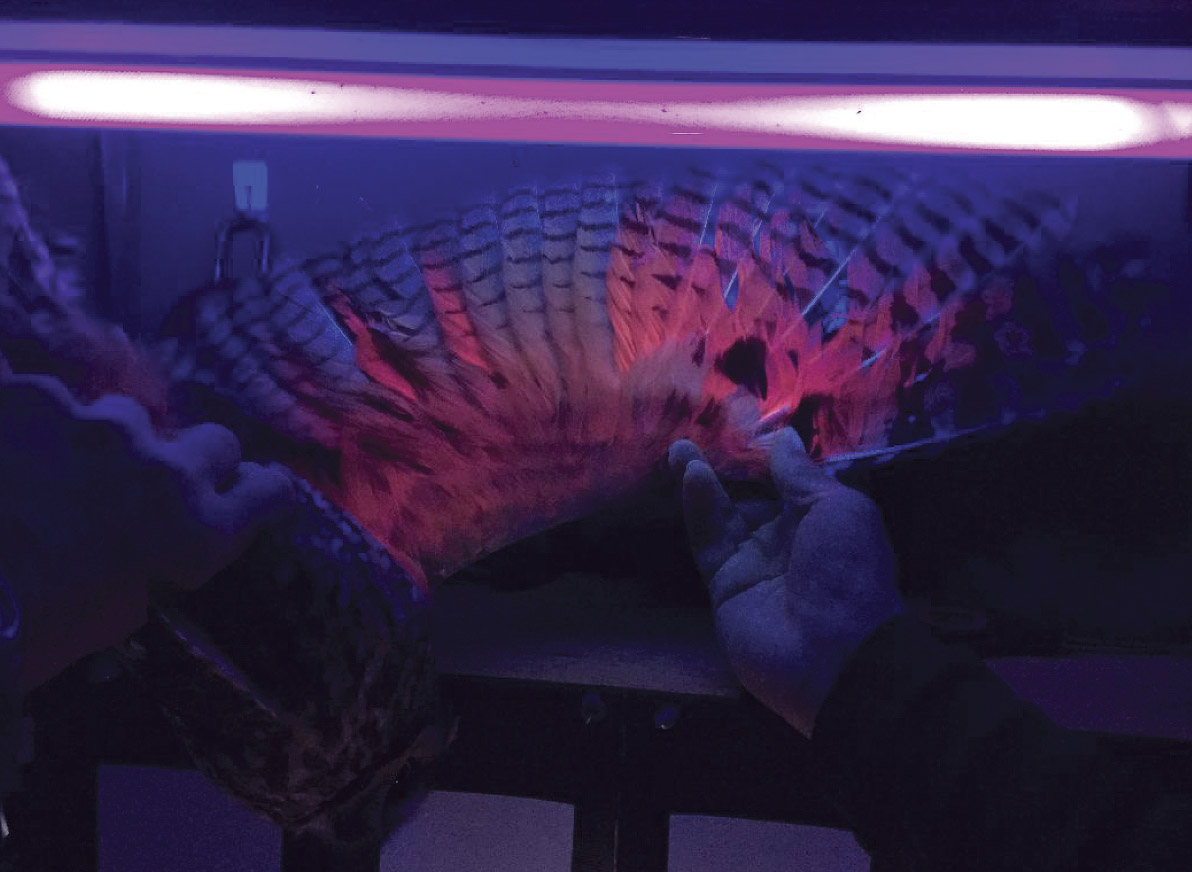The long-eared owl, Asio otus, is a majestic raptor known for its perky horn-like ear tufts, and cryptic herringbone markings that help it meld into its arboreal habitat. But in certain light, scientists discovered, its dappled forest camouflage is betrayed by fluorescent, day-glo pink wing feathers.
Ornithologist Emily Griffith and her colleagues, from Northern Michigan University and the state's Whitefish Bird Point Observatory, examined feathers collected from the inner wings of 99 long-eared owls as the birds migrated through Michigan's Upper Peninsula in the Spring of 2020.
They wanted to catalog the various rosy shades of fluorescent pigments this population sported, to see if they could decode what it might mean to those who can see it.
Owl eyes can detect this magenta fluorescence – emitted by photosensitive pigments called porphyrins, from the Greek word for purple – even without the aid of a UV light, as can other birds with the ability to see in the ultraviolet spectrum.
The fact that it's not in the spectrum visible to our own mammal eyes suggests it may be a perfect way of signaling to its peers without being detected by its main prey – rodents and other small mammals.
 A long-eared owl wing under a blacklight. (Griffith et al., The Wilson Journal of Ornithology, 2025)
A long-eared owl wing under a blacklight. (Griffith et al., The Wilson Journal of Ornithology, 2025)The photosensitivity of porphyrins not only causes them to glow in the first place, it also makes them degrade with continual exposure to sunlight, which often means that avian fluorescence fades with feather age between molts.
We know that other kinds of pigments in bird feathers play a role in signaling age, sex, size, and overall health to potential competitors and mates. For instance, even without a blacklight the researchers could guess the sex of long-eared owls by their dark (female) or light (male) plumage, although even this system is not foolproof, with roughly one third of the owls left without an assigned sex due to their intermediate coloring.
But it's yet unknown if similar messages are written in these owls' ultraviolet undergarments.
Griffith and team found feathers from older birds had much higher concentrations of the fluorescent pigments than younger birds, and were stronger in the darker-plumed females than in the light-colored males.
Younger birds, and those with paler plumage overall, had stronger pigments if they were heavier. This, the authors note, suggests the pigments could function as an 'honest signal' of an owl's health.
"It is possible that fluorescent pigments exhibited in long-eared owls are used in sexual selection," the authors write. "The only time in which these pigments may be directly on display (besides during flight) would be during courtship behavior, during which the male performs a courtship flight to attract females."
But even if the owls were keenly attuned to the subtle differences in wing glow flaunted during male flight, it doesn't explain why females' wings should be so much brighter.
"Moreover, this trait doesn't follow a strict binary – the amount of fluorescent pigments in these owls exists on a spectrum where the amount of pigment is related to size, age, and sex all together," Griffith says.
The team suspects something else might be driving the major pigment differences: heat regulation. Fluorescent pigments in eggshells are known to help regulate heat by reflecting infrared wavelengths, and they could serve a similar function in the females' inner wing feathers, limiting heat loss while nesting.
"This alternate hypothesis would explain why females have significantly more fluorescent pigments, as males do not incubate and are more physically active as they hunt for prey items while females take the primary role in incubation," the authors write.
This research is published in The Wilson Journal of Ornithology.

.jpg) 3 hours ago
1
3 hours ago
1
 English (US)
English (US)